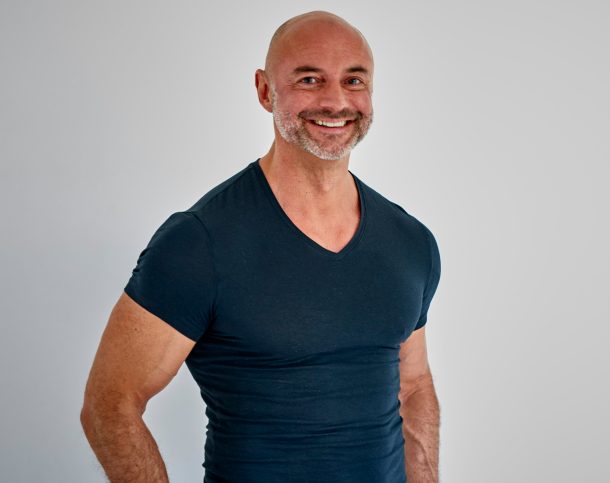Do you have a clear vision of where you’ll be in 1 or 3 years? Here’s a sure-fire way to get clear about the future you want and how to create clarity.
A vision is defined as “the ability to think about or plan the future with imagination or wisdom”. A powerful vision should connect with you and instantly capture what you most hope to be and achieve in the long term. It’s about having a clear picture of what your definition of success looks like for a particular project at a particular time in the future. It should serve as your guiding light
A vision is not a mission statement. Your mission defines what you’re currently doing and underpins your fundamental purpose. It’s something that you’re committed to doing day in day out. The difference between the two is a mission statement focuses on what you’re doing in the here and now, whilst a vision focuses on what you’ll be doing in the future.
A vision isn’t a strategic plan—which is the road map to where you want to go. A vision is the actual destination. It’s a lucid description of what “success” looks and feels like for you —what you believe you will be doing, the outcome of what you’re achieving and the effect it has on your, your relationships, organisation and community.

The results of creating and practicing visioning are remarkable on both a professional and personal level. It’s helped countless individuals and organisations create a greater sense of purpose and achieve a level of success that’s beyond what originally was thought possible.
This purpose of this article is to focus on the actual writing of the vision with steps for getting it down quickly and effectively.
An effective vision needs to be:
1. Inspiring
It should challenge, dare and inspire a vivid picture in people’s minds that creates clarity of what you’ll be doing and how you’ll be feeling in the future. This should enthusiasm, energy and action together with the drive, focus and commitment to make it a reality.
2. Bold yet believable
Your vision needs to be bold, audacious and daring yet compelling enough to believe that you actually have a realistic shot at making it happen. Whilst it’s vital to think beyond your current capabilities, your vision has to push you outside your current reality but not into the realms of fantasy.
3. Written down
You need to write your vision down as vividly as possible and include any pictures, photos, drawing etc that could illustrate exactly what you’re trying to achieve.
4. Communicated
Not only do you have to document your vision but if you want it to be effective, you actually have to tell people about it too

Step 1: Pick Your Topic
Visioning is appropriate for projects of all shapes and sizes. The process can be used for creating anything you can imagine including: an ideal lifestyle, a physique and health program, creating goals for a new project, bold business changes that you want to achieve in 1 year or your best relationship. Visioning is remarkably versatile and can be applied to anything you’d like to envision a better future for.
Step 2: Pick the Time Frame
Most personal or organizational visions will be somewhere between one and five years out. If you are wanting to start with a smaller project, the time frame can be one week or six months.
Step 3: Quickly List Achievements
Think about the work you’re embarking on and quickly list past, positive achievements that seem related to it. Don’t spend more than ten minutes on this, you can always add more. The idea is to create a base of positive energy on which you can build success. The more you put your energy into the positive, the more likely you are to attain greatness in the visions of the future you’re engaged in creating.
Step 4: Rules for Writing the Vision
Give yourself somewhere between 15 and 30 minutes to complete the first draft. While writing a vision is hugely important, don’t let its perceived weight work against you. The results will be great regardless. You can compose your vision in any style you like, but I want to emphasize the importance of putting the word “draft” on your document. Unless you’re writing a vision for a shift that starts in a few minutes, what you’re working on may get revised as you gather input from others if you feel it’s necessary. That said if you’re writing it purely on your own, there are a few rules to follow that really do work. Experiment and see if the whole thing works way better for you by incorporating these suggestions.
A) Go for something great.
The work here is about writing visions of greatness—if you don’t describe something special in the first draft, it’s not likely to get more inspiring later. Put something wild out there—shoot for the stars! If the early draft isn’t kind of scaring you a bit and creating butterflies then you probably haven’t pushed yourself or let out your true desires.
Be bold! Shoot for the stars
B) Write from the heart.
A vision of greatness is about your passion and hopes for the future. If you’re the one writing it, it’s about what you believe in, what gets you excited. Even if it includes things that others have said you couldn’t or shouldn’t do. Go for it and don’t hold anything back.
C) Send yourself to the future.
This may sound obvious, but it’s essential to project yourself into the future – write as if you’ve achieved your goal already. For example, if you’re writing a vision of creating your ideal morning, you might start out with…
My alarm clock goes off at 5.10am and I throw off the covers, go to the bathroom, brush my teeth and smile. It’s a new day. My mat is waiting patiently for me as I enter my meditation space. I take a bow, inhale deeply and begin my daily practice. Cross legged, I notice my posture, my breathing and how I feel. A steady stream of thoughts come and go as I return my attention to my breath. With a final exhale my focus shifts from inward to outward as I make a thoughtful transition, opening my eyes and moving my fingers and toes. I give thanks then move intentionally to the kitchen.
Again, this may seem strange, but it is critical. You are always writing “we have” or we are,” not “we will.”
D) Write very quickly.
Experience has shown that the visions written quickly have turned out the best. So, start writing. Don’t wait until the stars are perfectly aligned. Just do it!
E) Use the “hot pen” technique.
Once you start writing, keep writing for 15 minutes regardless of what you’re saying or how silly or smart it might seem. Keep the pen or keys on the keyboard moving and don’t stop to self-edit. Sometimes the most important/insightful elements of the vision are the ones that you almost didn’t write down.
F) Don’t be afraid to get personal.
If required, blend both personal and professional goals so that you arrive at one holistic vision or two visions (one personal and one for the organization) that are compatible and mutually supportive. Weave in what you want to do, what gets you excited and super motivated.
Step 5: Write the First Draft of the Vision
With all of those rules in mind, put down a vision draft. You could start by writing: “It’s (fill in the date you’ve chosen above). I’m about to head out for the evening. There are so many great things that are going on that make it clear that my 1-year vision has come to be the reality that I hoped and believed it would back when I wrote it.” Start listing what they are and just keep going until your time is up. Then put the draft aside for several days. (Obviously if you have to get it done sooner, adjust the time frame appropriately.)
Step 6: Review and Redraft
Read the statement from start to finish. Experience shows that 80 or 90 percent of what you put down in that first scary rendition is right on track, but you can still work on both the content and the language. As you read through it, keep in the back of your mind:
- Does it sound inspiring?
- Do you get more excited when you’re reading it?
- Note that in this context, “excited” does not preclude anxiety about how to actually implement it. For some of us, the two almost always go together!
- How specific should you get in your writing? Very. Don’t just say, “I want to be wealthy,” give an actual salary number or savings amount. Use a sales number that’s meaningful rather than just saying, “I want more revenue.”
- If it is a personal goal, say, “I’m spending two weeks on holiday in September,” rather than, “I’m spending more time away.” If necessary, you can have up to four redrafts, but that’s the most I’d recommend.
Step 7: Get Input from Advisers
If you feel you’d like to get input from others, this is when you ask people whose opinion you value to review the draft. The idea is to keep improving it and get clarity on what you mean and what it says. You can start by asking more supportive readers and then later move to more challenging ones.
Remember, at this stage, most input can be helpful although you aren’t obligated to use everything that is offered up.
Conclusion
It’s time to move forward and share your vision with everyone that will be involved in implementing it. Having a vision of greatness in writing certainly doesn’t guarantee success, nor does not having a written vision mean you’re doomed to failure. But a vision sets you up to work together toward a shared, inspiring, attainable (if also challenging) positive picture of the future. Take it from someone who came at this all with a fair degree of skepticism and uncertainty and who resisted doing it for many years—in the end, it’s worth the effort. It’s a way more inspiring way to create your life and it’s a heck of a lot more fun!
Arnold Ferrier Coaching
Helping outwardly successful leaders tame their inner critic to achieve personal and professional growth.
ICF Code of Ethics
Privacy Policy
© 2023 Arnold Ferrier Coaching


